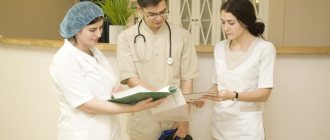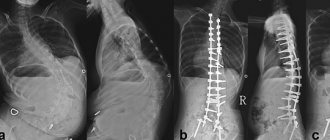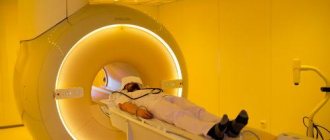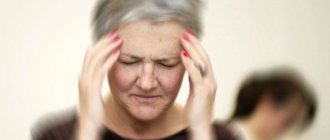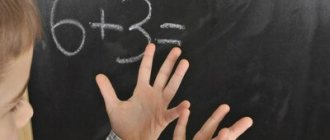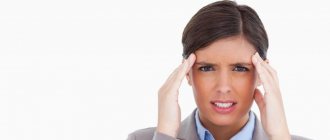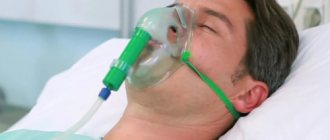— How does the LHC differ from the Tomatis method, micropolarization? How do they fit together?
BAC is the impact of an acoustic signal, coordinated with the functional activity of the brain in real time, to activate the work of regulatory structures. Micropolarization is exposure to direct currents to stimulate the central nervous system. The signal used in the Tomatis method, unlike the LHC, is not consistent with the functional activity of the brain at the current time, and therefore is not as effective. BAK has a more targeted and natural effect on the body. At the same time, BAC is combined with polarization, reducing the risk of side effects (it is not recommended to do it on the same day), and with Tomatis (it can be done on the same day).
Who is the LHC indicated for?
For children
| For adults
|
How is the procedure performed?
Headphones are put on the child, and sensors are attached to his head that read EEG parameters. After this, he begins to hear acoustic waves, which are essentially converted electrical signals from the brain. Each LHC procedure is carried out under the control of EEG recording via 4 channels online (review and indexometric analysis). After the procedure, the specialist has the opportunity to evaluate changes in various EEG parameters.
The duration of the procedure is 15-25 minutes, while the procedure is comfortable and the patient does not experience any painful sensations.
A positive effect is often noted already during the procedures or within 1-1.5 months.
Recommended course: from 7 to 15 sessions of 15-25 minutes. It is advisable to repeat this treatment after 2-3 months.
Reviews
Review from Elena Zherikhova, Anya’s mother (3 years old)
Diagnosis: ONR, PVRD, motor alalia
Course duration: 01/22/16 - 02/02/16
I would like to express my deep gratitude to all the doctors and specialists of the clinic, as well as the creators of the method, Father Konstantin, for the miracle they perform for little children!
My daughter stopped talking at the age of 1 year 8 months. after the 3rd DTP vaccination.. Vaccinations began after a year, there was probably a premonition, I delayed it as best I could.. At first I didn’t see anything special except a slight increase in temperature.. Then I began to notice my daughter’s strange behavior: she didn’t want to play together , the boy began to suck, stopped talking AT ALL! even MOM, DAD.. I tried to find help from doctors in my hometown, but in vain, basically everyone formed the standard phrase “now everyone is starting to talk late,” although my daughter started talking early at 8 months! and then there’s such a rollback! not a single word!
After months of waiting, hoping that the child would talk, another months of searching for where to go with my pain, I finally FOUND! First, we arrived at the clinic of the Bekhtereva Brain Institute in St. Petersburg, after consulting a neurologist, our daughter was prescribed two procedures: TCM and LHC. After the procedures, I began to notice that my daughter became calmer, more approachable, became interested in what was happening around her, began to sleep better and simply smile and be happy more!
After a few procedures, she began to address me as MAMA! and headphones! Judging by her behavior, my daughter really liked the procedure, she even asked in her own way, with gestures and sounds, to turn on the music when the procedure was over!
We did the first course in June-July 2015.. Now we have arrived for the second course.. During these six months, a MIRACLE happened in our lives! My daughter began to speak!, at first simple sound combinations and words, then there were more words, she tried and practiced with pleasure, phrases and small sentences appeared! Now she can say what she wants, answer questions, can remember and recite a short poem, and tell the plot of a cartoon she likes in two or three sentences! Of course, our sound pronunciation and grammar are still not very good, my daughter doesn’t ask questions herself yet, mostly speaks to herself in the 3rd person, doesn’t listen to fairy tales or prose at all.. But we’re trying very hard!
By the way, in addition to speech, after the first course of TCMP and BAC, during these six months we stopped using diapers, even at night! my daughter either doesn’t pee or asks to use the potty! My daughter has become more inquisitive and outgoing!
Probably, too much has already been written.. In conclusion, I want to once again say a huge THANK YOU and a deep bow to all of you, dear DOCTORS, for the MIRACLE!!!, which happened only thanks to you in the life of my daughter, and therefore in my life! Now we are finishing the second course of TCMP and BAC, and again we will wait for a MIRACLE! It was very nice to see all of you again, our dear and respected DOCTORS!
- Elena Vladislavovna
- Dmitry Borisovich
- Natalya Konstantinovna
- Natalya Yurievna
- Tatyana Vladimirovna
May the Lord grant you all new successes in your work of helping all little children, new discoveries and new ideas! With great respect and gratitude to you, Elena, mother of her beloved daughter!
Positive effects
The technique is aimed at restoring the natural processes of regulation of mental activity. Acoustic therapy is also used to improve the adaptive abilities of the brain, which can be useful for chronic stress and impaired control of emotions. The physiological effect of BAC is associated with the restoration of cellular potential and improvement of neural interactions in the brain.
Additional effects:
- Restructuring of cognitive activity aimed at eliminating any mental illness. The procedure demonstrates effectiveness for mood swings, depression, nervousness and other conditions.
- Restoring learning ability. This effect is especially useful for a child, since at an early age the nervous system retains a high degree of plasticity.
- Preservation of cognitive abilities against the background of progressive brain diseases. This effect is used in complex therapy of degenerative pathologies. Such exposure is necessary for adult patients with Alzheimer's disease and other types of dementia.
- Improvement of hemodynamic condition. Blood delivery to each part of the brain is enhanced. As a result, all cells receive sufficient oxygen and nutrients.
- Modulation of the immune system: BAK maintains the body’s protective functions and prevents the development of inflammatory processes in parts of the nervous system.
- Analgesic effect, useful for chronic tension headaches and migraines.
- Neuroendocrine regulation. The correct balance of neurotransmitters in the brain helps maintain cognitive abilities. BAK affects the centers for the production of mediators and eliminates the deficiency of serotonin, dopamine and other substances.
Thus, acoustic therapy improves brain function on several levels at once.
Service information
Bioacoustic correction (BAC) is an innovative method of neurotherapy based on the use of sound and music.
Specialists use low-frequency sounds that correlate with the rhythm of the patient's electroencephalogram. This therapy stimulates the central nervous system to restore its own functions and structures. A special feature of the method is an individual approach: recording a person’s EEG and other details of anamnesis help doctors create unique “noises” for listening. It is noted that during therapy the process of self-regulation in the central nervous system occurs in real time. Positive impact mechanisms are based on neural feedback and emotional reactions. Bioacoustic correction should not be confused with ultrasound therapy, since in this case sound ranges accessible to human hearing are used. The main area of influence in this case is the sensory system associated with the temporal lobes and the central nervous system as a whole. Nervous changes that occur when sound affects receptors spread throughout all parts of the brain and help eliminate illnesses.
Previously, music therapy was used primarily in psychiatric practice as a relaxation method. A new method of acoustic therapy was developed by Russian scientists. Conducted studies have proven the effectiveness of acoustic correction for various neurological disorders. Today, this procedure is used in many countries.
Contraindications
BAK is a safe procedure. However, this procedure has a number of contraindications:
- acute postoperative period,
- hypertensive crisis,
- acute infectious diseases,
- acute skull injuries,
- acute disorders of cerebral and spinal circulation,
- myocardial infarction in the acute period,
- acute and subacute inflammatory diseases of the brain and spinal cord, its membranes (myelitis, meningitis, etc.),
- acute bleeding,
- with caution - epilepsy.
Performance indicators
First of all, changes for the better should be looked for in the well-being of the patient himself, and not in the data of his tests. If the child is capable of coherent speech due to age, health and development, you can ask him - usually young patients are happy to talk about improvements.
For seriously ill people, improvements consist in the subside and gradual disappearance of symptoms, normalization of condition, increased socialization, etc. - all this will be noticeable to others.
To confirm, you should pay attention to EEG indicators, psychological tests, and the results of examinations by a specialist.
Mental retardation
This name was given to underdevelopment of mental activity. As a rule, it is provoked by several factors, among which genetic diseases come first. The other group consists of exogenous factors: trauma, intoxication, infection, fetal hypoxia.
Mental retardation is irreversible and is characterized by the following features:
- totality of the lesion - all neuropsychic functions are disrupted. Speech especially suffers - the grammatical side, the active vocabulary is very meager. Emotions are flat, monotonous, little controlled;
- Among mental processes, thinking is the first to suffer. Its deficiency leads to underdevelopment of elementary mental processes: memory, speech, perception.
UI is primarily represented by oligophrenia . This is underdevelopment of the brain associated with irreversible damage to the cerebral cortex. It is a congenital or acquired defect before the age of two.
There are three degrees of oligophrenia:
- debility;
- imbecility;
- idiocy.
They differ in the severity of the intellectual defect. If IQ with debility ranges from 50 to 70, then with idiocy this figure is 20.
Children suffering from debility are capable of simple work. They find it difficult to learn new skills, and their emotions are very primitive. Sensorimotor reactions are slowed. Phrase speech and mechanical memory are preserved. They are able to master basic reading, writing, and counting skills. Debility is the mildest degree of the disorder.
Imbecility preserves the most primitive self-service skills, the ability to remember a small amount of information, and allows one to acquire basic learning skills.
Idiocy is a gross, deep disturbance of thinking (virtually absent) and all mental processes in general. Such children are not capable of self-care and have poor spatial orientation. Almost no one recognizes them except the people caring for them. Behavior is often dictated by instinctive programs. The speech is incomprehensible. Expressions of emotions such as crying and tears are not typical.
Dementia is an acquired dementia that develops in a child after 2-3 years of age, and is accompanied by the collapse of already formed mental functions. Infections or injuries can trigger dementia. The condition is characterized by uneven damage, with some parts of the brain affected more than others.

